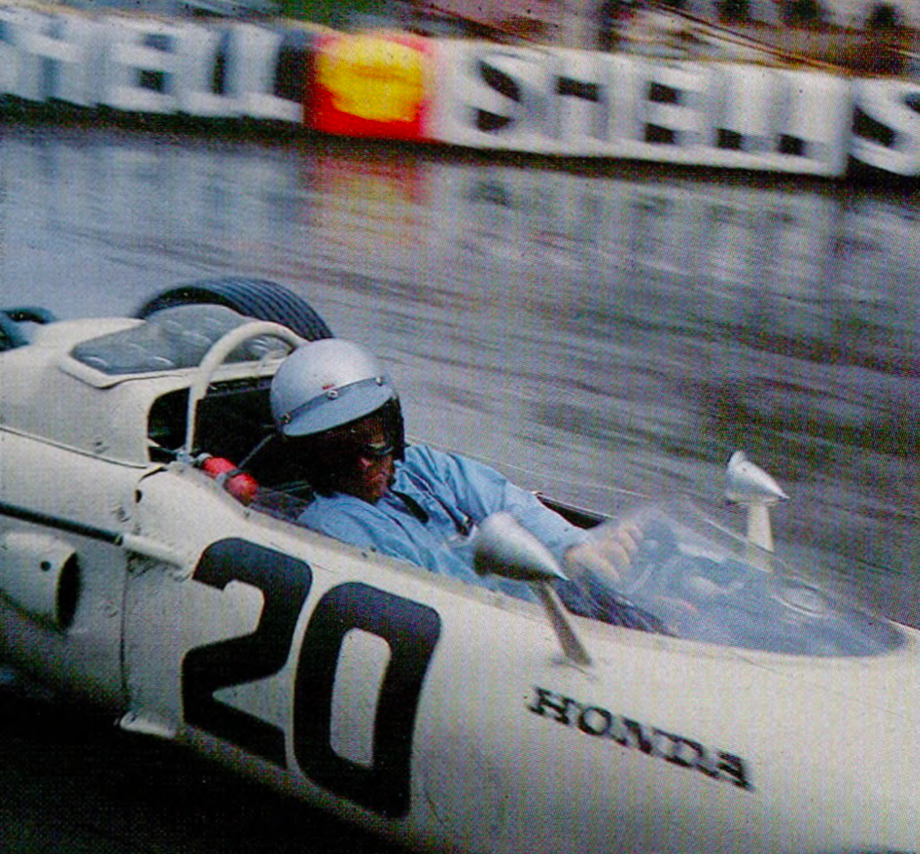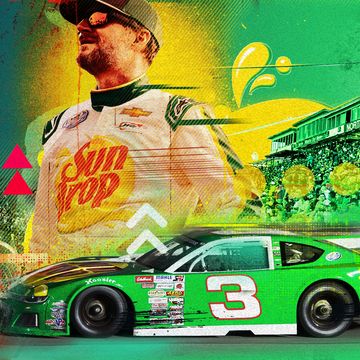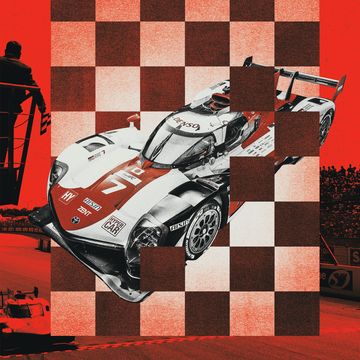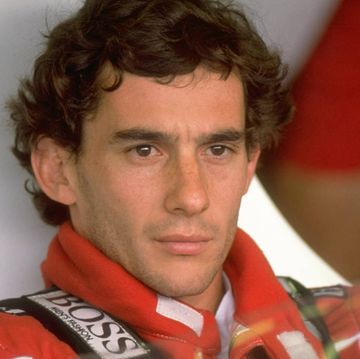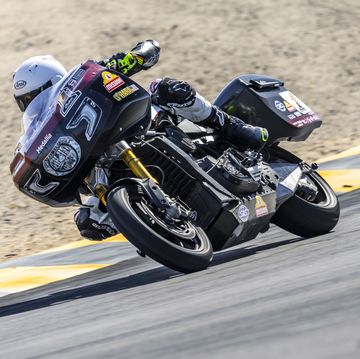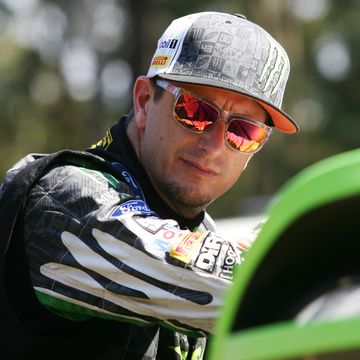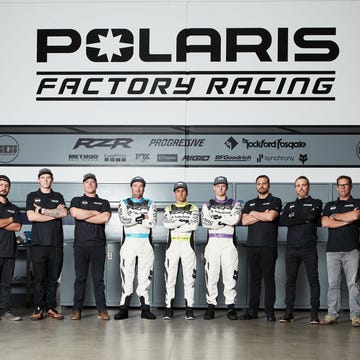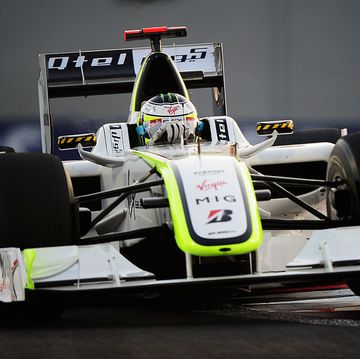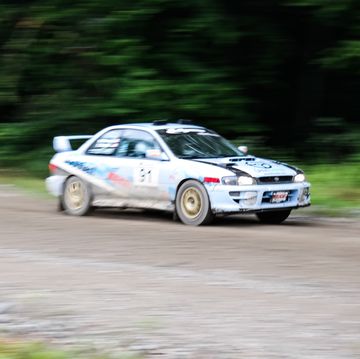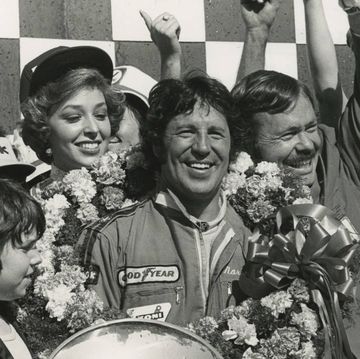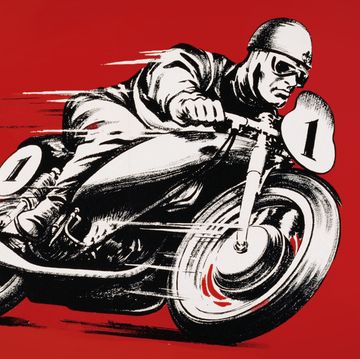Update 10/02/2020: This story was originally published on October 25, 2019. We're republishing it today, following news of Honda's departure from Formula 1 after the 2021 season.
Honda's first entry into Formula 1 was not quiet. "They were known for their sound, a piercing shriek that could only come from a small displacement V-12," wrote Phil Hill in the July 1982 issue of Road & Track.
Hill was present for Honda's first F1 race, the 1964 German Grand Prix, where the 1961 world champion was driving for Cooper. Honda brought American rookie Ronnie Bucknam to drive its new car, the RA271.
"The sound of the Honda wasn't necessarily a welcome one for GP competitors," Hill remembered. "The Japanese car was quite innovative and many of us remembered what the last great innovation, the rear-engine Cooper-Climax, did to the status quo in the sport.
"The unspoken thought was, 'Well, here we go again. Someone's going to put an engine crosswise in the back, a stack of motorcycle engines side by side no less, and run off from all of us.'"
That didn't quite happen, at least not initially. Bucknam crashed three laps from the finish at the Nürburgring while running in ninth. Ultimately, he was classified 13th, a decent result considering his qualifying time was nearly a minute off of John Surtees, driving for Ferrari. Honda entered two more grands prix that year, but finished neither.
Though Honda didn't manage to put up great results, it did have an engineering marvel in the form of the RA271.
Honda founder Soichiro Honda was hugely ambitious. Less than a decade after he set up a company to make motorized bicycles in 1947, Honda announced his intention to enter the Isle of Man TT and win. In 1961, Honda became the first Japanese manufacturer to win the famous motorcycle race, sweeping both the 125cc and 250cc classes.
His automotive ambitions were similar. He wanted to establish his company as a major player in the car world, so he went straight to the top rung of motorsport. Work began on a Honda F1 car in 1962, a year before its first road car, the T360 truck, went on sale.
Honda R&D bought a Cooper-Climax F1 car in 1961, but the monocoque chassis of the RA271 owed a lot to the Lotus 25, though the same could be said for much of the grid at the time. Really, the engine was the star.
Work on the V-12 began in 1962 by a team of motorcycle engineers led by Honda himself. Hill noted in 1982 that the engine was based on the 250cc twin used in Honda's CR72 racing bike. Thanks to dual overhead cams and four-valve heads, the engine made 41 horsepower and revved to 12,000 rpm.
Formula 1 first introduced a 1.5-liter engine formula in 1961, leading suppliers to develop four-, six- and eight-cylinder engines for the series. Ferrari experimented with a flat-12 in 1964 and 1965, but Honda was the only constructor to go all in on a V-12. Twelve cylinders meant more complication, but a lighter rotating assembly than an engine of the same displacement with fewer cylinders. Honda's at-the-time-unconventional four-valve heads also helped lighten things up, compared to two-valves. A lighter rotating assembly meant more revs, and thus, more horsepower. Plus, Honda's motorcycle engineers had experience with tiny pistons and valves.
The transversely mounted engine used a roller-bearing crankshaft, with drive coming off the middle to a six-speed gearbox. It could rev to 14,000 RPM, though ultimately, peak power was 230 hp at 11,500 RPM. "I consider that an accurate figure," Hill said, "especially considering the ease with which the Honda drivers could outrun the other F1 cars."
For 1965, Honda mounted a full attack on F1, updating the RA271 to create the RA272, and hiring Richie Ginther to drive a second car. Honda engineers developed the engine through the season. Hill highlighted a memorable one:
One interesting though temporary modification to the V-12 was an attempt to widen the engine's power band. Honda tuned the engine as three separate four-cylinder units placed side-by-side. setting up each foursome to get maximum power in complementary rev bands. The engineers even used different length intake stacks, individual camshaft lobe profiles and ignition timing for each of these "engines."
Ginther retold another:
We once needed a crankshaft design change. Honda engineers telephoned at night to Tokyo from Amsterdam. I went to bed while they were on the telephone, slept through the night, got up the next morning and they were still on the phone... and that wasn't the only time that happened. We had a new crank within a week, but Honda wouldn't send just the crank, they sent the whole engine. And they wouldn’t air freight anything. A guy would get an airline ticket and take the engine on as personal baggage and pay the overweight charges, because Honda found that was the most expedient way of making certain it got there.
For all the hard work, though, there was little reward. The team's best finish in 1965 was sixth place, until the last race of the season, the Mexican Grand Prix. The GP was held on a circuit at high altitude, which played into the hands of the Honda V-12, which was fuel injected. At Ginther's suggestion, the RA272 was fitted with a manual fuel-air mixture control, and for this race, he had it turned all the way to rich.
Ginther recalled the race, in an interview with Hill:
I didn’t get a perfect start. When I dropped the clutch, the revs started to fade and I had to gently boot the clutch to slip it and bring the rpm back up. Dan Gurney and Jimmy Clark, who were the two qualifiers ahead of me on the two-by-two grid, had already moved out. When I booted that clutch the Honda went like a #@*$&* dragster. I was so sure I had them, you know what I did? Here I am down in the car and there are Dan and Jimmy and I'm going right between the two of them with a full head of steam on. I pulled myself up and looked at them as I went by, smiling. I never saw anything like it. When I exited Turn 2 at Mexico City, there wasn't anybody in my mirrors.
Ginther won the race, leading every lap after he got ahead of Clark and Gurney, giving Honda its first F1 victory. It was the first victory for a Japanese team, too. Remarkable, especially when you consider that Japan was only two decades removed from World War II, and that Honda was only two years in to building road cars at that point.
Honda didn't change the status quo in F1, as Hill thought it could have, pulling out of the sport after 1968, notching just one more victory in the interim. But, the firm's innovative 1.5-liter V-12, previewed the future dominance of Honda engines, which powered every constructor's championship winner from 1986 to 1991.
And its piercing shriek will not soon be forgotten.
A car enthusiast since childhood, Chris Perkins is Road & Track's engineering nerd and Porsche apologist. He joined the staff in 2016 and no one has figured out a way to fire him since. He street-parks a Porsche Boxster in Brooklyn, New York, much to the horror of everyone who sees the car, not least the author himself. He also insists he's not a convertible person, despite owning three.




